Reprinted from New Paradigms in Lyme Disease Treatment with the kind permission of Connie Strasheim and Wayne Anderson ND. To learn more about the book and read more of Dr. Anderson’s chapter, see: www.NewLymeTreatments.com

These symptom patterns should only be used as a guideline for diagnosis since no two people are exactly the same, and symptoms will vary from person to person. Neurotoxins from these infections all cause inflammation in the brain and nervous system and cause similar symptoms and compromise the body’s function in a similar way. Yet, each microbe often will manifest its own unique traits or personality.
Understanding the different symptom patterns that the microbes cause is especially important since lab tests for Lyme disease aren’t adequate (although they have improved greatly in recent years). Diagnosis also can be complicated by the fact that people’s immune systems respond differently to infection, according to their life stressors and metabolic strengths and weaknesses. Doctors should look for patterns in their patients and always appreciate that treating people with Lyme disease is about shades of gray, because the infections create symptom pictures that are never black and white.
Babesia or Babesia-Like Organism (BABLO) Symptom Patterns
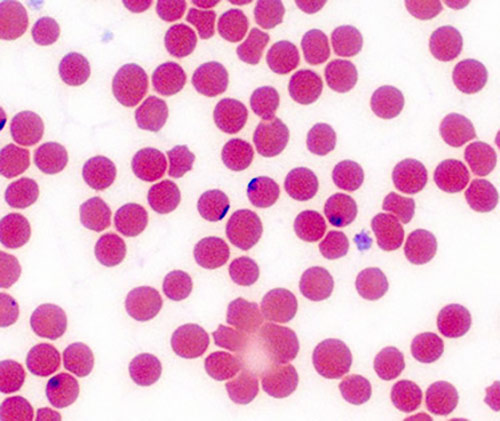
Babesia also can affect the autonomic nervous system, which is responsible for much of the “automatic” functions of the body, such as heartbeat, breathing, etc. This means that the communication between the brain and body is affected, so any physical symptoms that patients have from Babesia can be related more to autonomic nervous system dysfunction rather than the organisms themselves. For instance, Babesia can cause postural orthostatic tachycardia syndrome (POTS); a racing heart at rest and/or an irregular heartbeat and heavy pounding heart at night, but the problem isn’t in the heart. The problem is that the autonomic nervous system isn’t functioning properly.
Shortness of breath is also common, because people with Babesia don’t regulate their oxygen-saturation flow properly due to problems in the autonomic nervous system (ANS). Such people feel a sense of “air hunger” because the ANS isn’t dilating their bronchial tubes or opening their diaphragm properly, because these parts of their body are not getting the signal to do so from the command center in brain.
Additional symptoms of Babesia include lots of drenching sweats and chills. Babesia is a relative of the malarial organism and is part protozoan and part bacteria. So as with malaria, people can get terrible chills and lots of sweats and basically feel like they are going crazy. People with Babesia are often quite chilled and can’t get warm and will have to take a hot shower or jump in a bathtub to warm up. The temperature de-regulation is again related to a dysfunctional autonomic nervous system. So, people either can’t get warm, or they get too hot. They turn down the thermostat at night because they are too hot, but then they get too cold while in bed and so turn it back up by a degree. They freeze when going to bed and throw the covers on; then, in the middle of the night, they get boiling hot and throw the covers off and drench their bedclothes in sweat.
Insomnia is common as Babesia affects the sleep center in the brain. Other symptoms include blurred vision, bowel-motility issues and bladder difficulties. People with Babesia will either have trouble starting their urinary stream or will go through episodes of incontinence. They may also have problems with bowel motility; usually constipation, but can also sometimes have diarrhea due to autonomic nervous system de-regulation. A dominant Babesia infection also can affect certain areas of the wrists, hands, ankles and feet. These areas can be painful, numb or experience temperature extremes.
Babesia does not generally cause pain in the body, so if a person has pain, then it’s usually due to another problem. The picture is always complicated though because people with Babesia who have a compromised detoxification system will have pain in their body as a result of poor waste removal. But, the pain is not from the infection itself.
These are what I call clearly identifiable Babesia symptoms in those patients who have an immune system that is not terribly depleted or who don’t have a compromised detoxification system or other conditions or infections that are currently active and which could complicate the symptom picture. The same holds true for the symptom patterns of all of the other infections described here.
Bartonella or Bartonella-Like Organism (BLO) Symptom Patterns

People who have active Bartonella symptoms have much more pain than people who are manifesting predominantly Babesia-related symptoms. The first thing out of their mouths is usually, “You have to help me with my pain.” They have pain in their joints and the connective tissue around their joints. This joint pain will migrate to other areas of the body. So for instance, patients with active Bartonella might have knee pain, but just when they are about to go to the doctor for the pain, the pain will migrate to the left elbow. The hallmark symptom of Bartonella is sensitivity and tenderness on the bottom of the feet, especially the soles.
Generalized pain in the body, or pain that is sharp and severe, is often related to Bartonella. Bartonella can also cause headaches and ice pick-like pain. Both Babesia and Bartonella cause headaches, but Bartonella headaches are worse. A Babesia headache produces more weird sensations in the head and pressure in the head. People with active Babesia infections will say, “I don’t know if I’d really call what I have a headache. It’s more like a pressure in the head.” Babesia can cause migraines as can Bartonella, but Babesia migraines are generally less severe. Bartonella prefers the occipital areas of the head; the back of the head and neck are generally painful. So pain is a dominant characteristic of Bartonella.
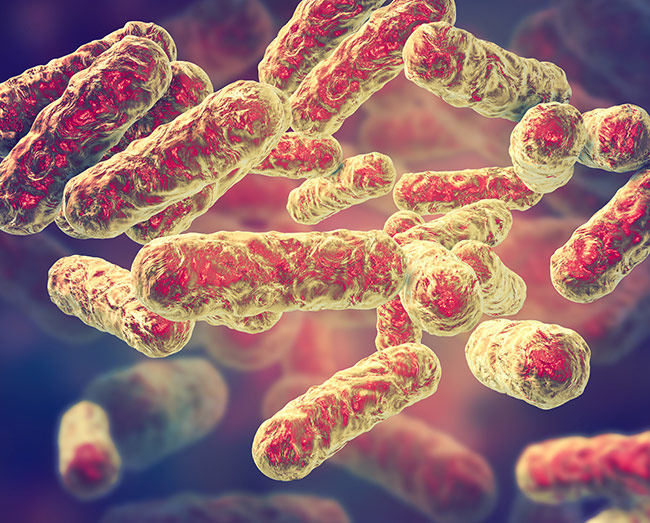
Bartonella-like organisms can also stay on the surface of the organs and tissues and cause a wide array of symptoms. One such symptom is gastritis. In fact, most cases of gastritis that aren’t caused by Helicobacter pylori infections are often caused by Bartonella, which is the second-most common cause of this condition. It can irritate the stomach so that people lose their appetite and/or get heartburn.
Many people with Bartonella infections are misdiagnosed as having bi-polar disorder due to their fluctuating moods; they can easily go from being angry and irritable to being depressed.
Bartonella can cause a low-level, relapsing sore throat. People with active infections will periodically awaken with sore throats and wonder if they are coming down with a cold, but then the sore throat will go away.
Bartonella irritates the bladder and can cause frequent urination, interstitial cystitis, or other chronic inflammatory conditions of the urinary system.
Bartonella can also cause fevers, but for patients to be able to run a fever, they need to have a relatively functional immune system, so not everyone who has a Bartonella infection will get a fever. Yet people will often feel hot, as if they have a fever, but their body temperature may be below normal.
Bartonella can affect the eyes and cause conjunctivitis, or inflammation of the outermost layer of the eye, which results in irritated, dry red eyes, as well as other eye problems.
Bartonella cause more skin-related problems than the other infections. Red bands or stretch marks on the skin called striae are common, as are acne and other skin problems.
Bartonella lives in the liver and spleen where it inflames these organs and compromises their functioning. When the liver and spleen are inflamed, the filtering capacity of the blood is affected, resulting in thick blood. People with Bartonella may have slightly elevated liver enzymes on lab tests. For instance, the alanine aminotransferase (ALT) test score may be just outside of the normal range and high only intermittently. The inflammation that Bartonella causes in the liver and spleen can compromise the body’s detoxification system in a major way, though. When the spleen is compromised, the lymph glands may also become swollen, which then causes the lymph flow to become thick, sludgy and slow.
Borrelia Symptom Patterns
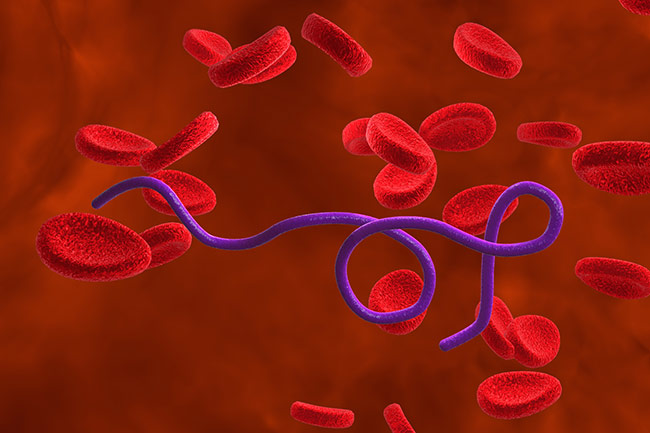
Borrelia causes pain, but the pain is much more diffuse and spread throughout the body. It also can be muscle-related and fibromyalgia-like, rather than primarily in the joints, as with Bartonella. However, doctors and patients need to keep an open mind when it comes to diagnosis and not over-generalize about symptom patterns. For instance, there is a subset of Borrelia patients who have arthritic-like symptoms and lots of inflammation in their joints, although I see this maybe less than 10 percent of the time.
The symptoms of Borrelia can be a mixture of a little of what’s found in all of the other Lyme-related infections.
Borrelia affects the nervous system, but it’s a bit more “ghost-like” in the symptoms that it causes, so it’s not as defined or specific. If patients have been adequately treated for Babesia and Bartonella infections and have only 20 percent of their symptoms remaining, such as a bit of fatigue, achiness and brain fog, I might suspect that they still have some Borrelia microbes that need to be addressed.
Lyme microbes are smart and are looking for hiding places in the body; they want to be invisible and disguise themselves from the immune system. This means that they don’t stay in the blood for long and quickly go to areas of poor circulation, to avoid being attacked by the immune system. Their goal is to lull the intracellular environment into complacency. For instance, Borrelia is able to change its form and alternate between the spirochete, cell-wall deficient and cyst forms as a way of confusing and hiding from the immune system.
Mycoplasma Symptom Patterns
Mycoplasma is an interesting organism that is also found in nearly everyone with Lyme disease. It’s very small, like a virus, and some researchers believe that it is really a cross between a virus and bacteria. It can accumulate on the endothelial lining (which is comprised of cells that line the blood and lymphatic vessels) and cause inflammation and pain.
Some German researchers believe that Mycoplasma exists in everyone in a benign form, and that it’s one of trillions of bacteria that colonize the body.
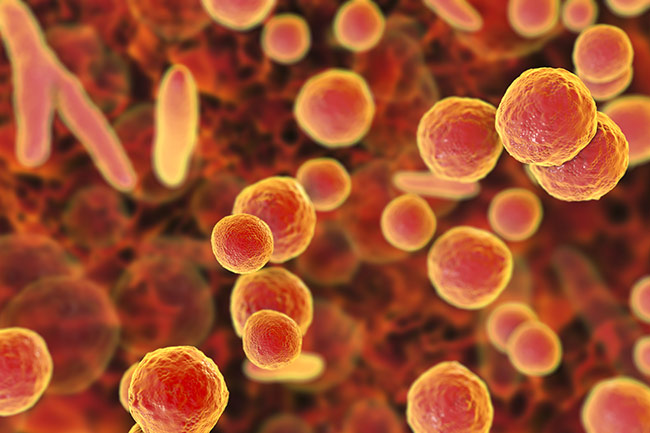
Mycoplasma can cause a minor cough when it is in the lungs; not the more extreme cough that’s caused by a cold or flu, but the kind of cough that occurs whenever a person takes a deep breath or laughs. People with Mycoplasma feel a little winded and may have mild inflammation in their chest. Mycoplasma can irritate the throat and cause a low-level sore throat. It also goes deep into the body and can affect the joints, connective tissue and cartilage. A rare and aggressive form of Mycoplasma can cause symptoms of rheumatoid arthritis and result in severe joint swelling and deformity.
Some German researchers believe that Mycoplasma exists in everyone in a benign form, and that it’s one of trillions of bacteria that colonize the body. However, when the immune system becomes compromised, and the body’s “compost heap” gets too full, then the Mycoplasma mutates into a pathogenic form and harms the body. So instead of living in harmony with us, it begins to inflame us and feed on us. I mentioned that Borrelia causes fatigue, but Mycoplasma is the most fatigue-causing Lyme disease-related pathogen there is.
I have found that if I have already treated my patients for all of the dominant Lyme disease co-infections, and they are even more tired than before, and their joints are all of a sudden stiff and achy, then this means that they may have a dominant Mycoplasma infection that is currently causing their symptoms.
As I mentioned earlier, the immune system prioritizes and focuses on the microbe that it currently perceives to be most dangerous to the body.
This means that it will often bring out Mycoplasma-like symptoms after some of the other infections, since Mycoplasma does not inflame the brain and nervous system as much as the other infections. The immune system will always protect the brain at all costs, and simplistically speaking, it does not perceive Mycoplasma to be as dangerous as some of the other co-infections; therefore, it is usually a deeper layer of infection that the immune system focuses on later in the treatment process.
Since it inflames the brain less than the other infections, people with active Mycoplasma also don’t have as many cognitive problems as people with active Babesia or Bartonella or as much mood instability. Mycoplasma likes to live in the fascia layer of the skin, which is directly beneath the top layer of the skin. So people with Mycoplasma might have a crawling feeling under their skin or their skin might feel sensitive to the touch. In addition, they might have a variety of unusual rashes. Because patients with active Mycoplasma have sensitive skin, they may not like to be massaged.
Mold Symptom Patterns
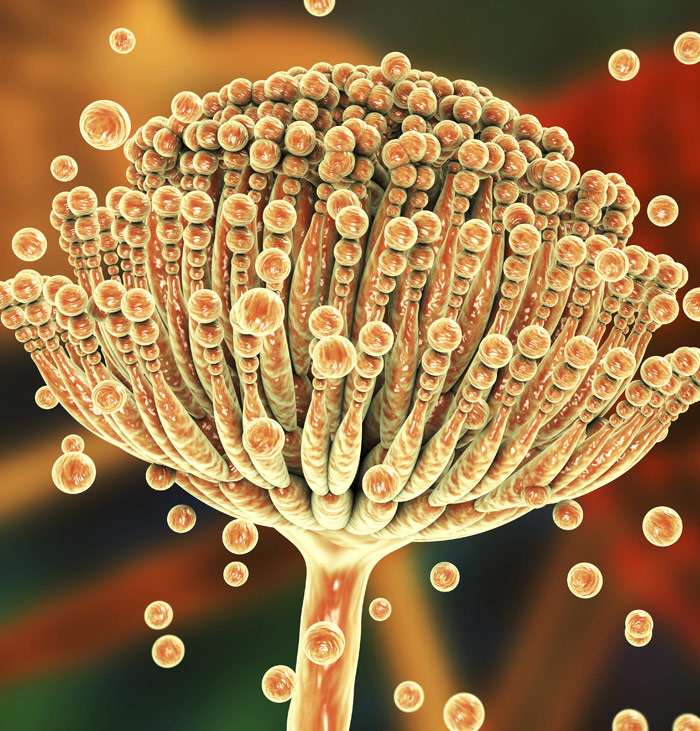
The organs and systems that are most affected by mold are the self-regulating systems of the brain and nervous system, as well as the endocrine, gastrointestinal and immune systems. Lyme and mold affect the immune system in the same way, and when one of these conditions is present in the body, the body becomes more susceptible to the other. In addition, 23 percent of all people have a genetic susceptibility to mold illness that can be determined by doing certain lab tests (more on this later).
Mold toxicity is important for people with Lyme and their doctors to understand because it can cause serious illness and compromise recovery from Lyme.
People who have been exposed to mold will be affected by the mold in a couple of different ways. Some lucky people, whenever they are exposed to a moldy environment, will have an immediate immune reaction; they will feel dizzy and spacey and quickly learn that they need to get out of the moldy environment. A second group of people will be less aware that they have been exposed to mold, and the spores that they inhale will stick to the mucus membranes in their sinuses, lungs and gut and colonize there. If this latter group has a genetic susceptibility to mold, they will have a greater chance of getting symptoms from mold exposure.
Mold and biotoxin expert Ritchie Shoemaker, MD, has established a set of criteria that doctors can use to determine their patients’ susceptibility to mold illness. One of these involves evaluating a certain HLA DRB gene pattern, the testing for which is done by Lab Corp.
Mold toxicity is important for people with Lyme and their doctors to understand because it can cause serious illness and compromise recovery from Lyme.
A healthy immune system and body that are not genetically susceptible to mold are designed to “zap” the mold upon its entry into the body so that it cannot colonize there, but in certain immune-compromised people, it is able to colonize. Once this happens, it’s very hard to dislodge. Once it’s in the body, it produces toxins, called mycotoxins, which inflame the body.
Over time, the mold takes over increasingly greater areas of mucous membrane in the body and always ends up finding its way to the bowel. The bowel is dark, moist and nutrient-rich, making it a hospitable place for mold to grow. And the more compromised and damaged the good bacterial community (microbiome) on the endothelial lining of the bowel is from Lyme and other factors, the easier it will be for the mold to expand its territory there.
Anytime the mucus membranes of the body are inflamed – whether in the nose and sinuses, gut, lung, bladder lining, skin, or the vagina – mold colonization should be suspected. The person who is unlucky enough to have high mold toxin levels will have symptoms that can be difficult to differentiate from those of Lyme disease. Like Lyme toxins, mold toxins stick to the cell membranes and then ooze into the cells, where they accumulate and add to the body’s cellular compost heap.
Mold organisms cannot live just anywhere in the body though; they are confined to the mucous membrane surfaces, and it is their waste products, or the mycotoxins, that enter the bloodstream and cause systemic symptoms. Consequently, the symptoms of mold toxicity are not as dynamic and variable as the symptoms caused by the adaptive Lyme microbes. Instead, they are more dull and flat. So if patients have seesaw symptoms; meaning, they get better for a while, then get worse, or have two or three good days, followed by three weeks of feeling terrible, then their symptoms are less likely to be mold-related.
In people who are predominantly battling mold toxicity, every day is the same; they struggle to get through the day and have low energy and a mild amount of brain fog. This pattern is fairly consistent. Mold also affects the brain and nervous system, so people with mold illness will have specific neurological symptoms. Neuropathies (damage or problems with the nerves) are common. Symptoms may include numbness or tingling in the hands and feet. Mold toxicity also causes a lot of depression, so when people have a Herxheimer reaction from mold detox (removing cellular mold with toxin binders and other therapies), depression may intensify along with other mold symptoms.
Mold symptom patterns can vary and are always worse during wet or humid seasons when mold thrives. Remember, the effects of neurotoxins are additive and cumulative. So, when brain fog or another mold symptom is added to the brain fog caused by Babesia, Bartonella, heavy metals, petrochemicals or Borrelia, the effects of each organism or toxin may compound those of the others. So, people with significant brain fog probably have more than one factor or infection causing that symptom.
Rickettsia Symptom Patterns
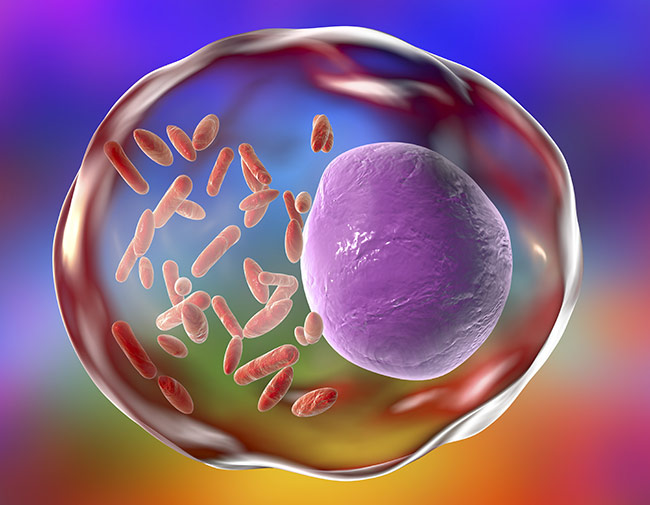
Yet, there are many other families or species of Rickettsia that are quite harmful and for which tests do not exist. The one that we know about is Rocky Mountain spotted fever (RMSF). The infectious disease community believes that RMSF is limited to specific regions of the United States. Lyme-literate doctors didn’t worry much about it initially. However, more recent evidence has shown that there are probably over 1,000 Rickettsia species, and that Rickettsia infections are more common and less regional than we had previously believed.
There can be an overall congested feeling in the body.
Rickettsial organisms are simpler than the dynamically changing Borrelia. They don’t seem to have multiple growth stages or as many forms as Borrelia; there are no cell-wall deficient forms, for instance. Therefore, they may be easier to treat, but we Lyme disease practitioners need to have a higher index of suspicion about their presence before we can learn how to adequately treat them all.
I’m still honing in on the specific symptoms that Rickettsia causes and distinguishing those from the symptoms of the other infections. I have some preliminary impressions about them, though. For instance, I’ve observed that people with Rickettsia can have a variety of skin and scalp rashes, the hallmark symptom being a rash on the palms and soles.
Rickettsia also causes stagnant, thick blood and congested circulation, which causes the blood vessels to become inflamed and results in blotchy and mottled skin. There can be an overall congested feeling in the body. Edema is common: people who have puffiness in their ankles or puffy faces and/or eyes when they awaken may have congested circulation due to Rickettsia.
Rickettsia commonly causes headaches. Cognitive problems, such as trouble focusing and concentrating, are generally not as common in people with active Rickettsia as in patients who are manifesting other Lyme co-infections such as Babesia and Bartonella. All of these infections can cause a bit of forgetfulness, but a person with Rickettsia will not think they have Alzheimer’s like a person with Babesia and won’t tend to get lost while driving home.
Rickettsia causes injected (red) blood vessels on the surface of the eye, unlike Bartonella, which causes a uniform redness. Some people have difficulty focusing their eyes and a blurriness described as “feeling like they are under water.”
However, the most prominent symptom of Rickettsia is musculoskeletal problems. People with these infections have lots of numbness, tingling and joint pain in addition to achy muscles. Therefore, when patients’ symptoms are vascular, musculoskeletal and less brain-related, then their doctors should suspect that they have a Rickettsia-like symptom presentation.
In Rickettsia, the lymphatic system is also more congested, as evidenced by areas of puffiness in the skin. This is because when the blood is “mucked up,” the lymphatic system will try to clean it. So, picture for a moment, that the lymph is like a drainage ditch on the side of the road and that the blood is the road. If you get a hard rain, the road will drain water into the drainage ditch. Similarly, the body will dump any “gunk” from the bloodstream that is not being adequately filtered by the liver into the lymph system to try to keep the blood as clean as possible.
New Paradigms in Lyme Disease Treatment, is published by BioMed Publishing Group, LLC; www.Lymebook.com.
Editor’s note: Any medical information included is based on a personal experience. For questions or concerns regarding health, please consult a doctor or medical professional.


















